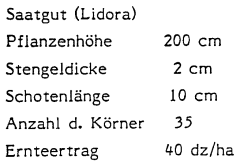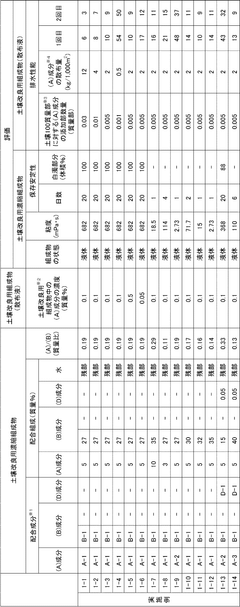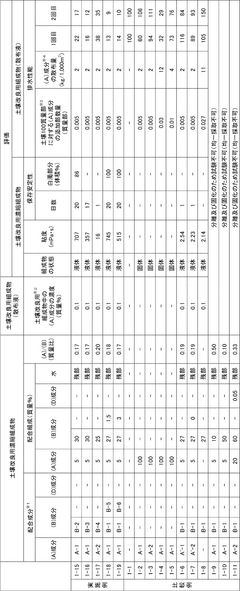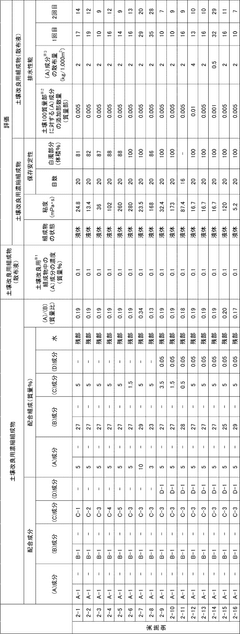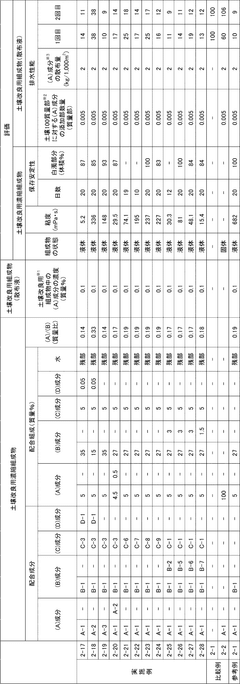How Hydroxyethylcellulose Enhances Crop Yield as a Soil Additive
JUL 31, 20259 MIN READ
Generate Your Research Report Instantly with AI Agent
Patsnap Eureka helps you evaluate technical feasibility & market potential.
HEC Soil Additive Background and Objectives
Hydroxyethylcellulose (HEC) has emerged as a promising soil additive in recent years, garnering attention for its potential to enhance crop yield and improve soil quality. This technology has its roots in the broader field of soil conditioning, which has been a focus of agricultural research for decades. The evolution of HEC as a soil additive represents a significant advancement in sustainable farming practices, addressing the growing global demand for increased food production while minimizing environmental impact.
The primary objective of utilizing HEC as a soil additive is to optimize soil structure and water retention capabilities, thereby creating more favorable conditions for plant growth and development. By improving soil aggregation and reducing soil erosion, HEC aims to enhance the overall health and productivity of agricultural lands. This technology aligns with the broader goals of sustainable agriculture, which seeks to balance crop production with environmental stewardship.
HEC, a cellulose derivative, is particularly noteworthy for its ability to form hydrogels when mixed with water. This property allows it to absorb and retain significant amounts of moisture, gradually releasing it to plant roots as needed. The technology's development has been driven by the need to address water scarcity issues in agriculture, particularly in arid and semi-arid regions where water management is crucial for crop survival and yield optimization.
The application of HEC as a soil additive represents a convergence of multiple scientific disciplines, including polymer chemistry, soil science, and agronomy. This interdisciplinary approach has led to innovative solutions for longstanding agricultural challenges, such as nutrient leaching and soil compaction. As research in this field progresses, the focus is increasingly on understanding the long-term effects of HEC on soil ecosystems and crop productivity.
Current technological trends in HEC soil additives are moving towards the development of more sustainable and biodegradable formulations. Researchers are exploring ways to enhance the biocompatibility of HEC with various soil types and crop species, aiming to create tailored solutions for different agricultural contexts. Additionally, there is growing interest in combining HEC with other soil amendments to create synergistic effects that further boost crop yields and soil health.
As we delve deeper into the potential of HEC as a soil additive, it is essential to consider its role in the broader context of global food security and sustainable land management. The technology's ability to improve water use efficiency and soil quality positions it as a valuable tool in addressing the challenges posed by climate change and population growth. Future research and development in this area will likely focus on optimizing HEC formulations, exploring new application methods, and assessing its long-term impact on agricultural ecosystems.
The primary objective of utilizing HEC as a soil additive is to optimize soil structure and water retention capabilities, thereby creating more favorable conditions for plant growth and development. By improving soil aggregation and reducing soil erosion, HEC aims to enhance the overall health and productivity of agricultural lands. This technology aligns with the broader goals of sustainable agriculture, which seeks to balance crop production with environmental stewardship.
HEC, a cellulose derivative, is particularly noteworthy for its ability to form hydrogels when mixed with water. This property allows it to absorb and retain significant amounts of moisture, gradually releasing it to plant roots as needed. The technology's development has been driven by the need to address water scarcity issues in agriculture, particularly in arid and semi-arid regions where water management is crucial for crop survival and yield optimization.
The application of HEC as a soil additive represents a convergence of multiple scientific disciplines, including polymer chemistry, soil science, and agronomy. This interdisciplinary approach has led to innovative solutions for longstanding agricultural challenges, such as nutrient leaching and soil compaction. As research in this field progresses, the focus is increasingly on understanding the long-term effects of HEC on soil ecosystems and crop productivity.
Current technological trends in HEC soil additives are moving towards the development of more sustainable and biodegradable formulations. Researchers are exploring ways to enhance the biocompatibility of HEC with various soil types and crop species, aiming to create tailored solutions for different agricultural contexts. Additionally, there is growing interest in combining HEC with other soil amendments to create synergistic effects that further boost crop yields and soil health.
As we delve deeper into the potential of HEC as a soil additive, it is essential to consider its role in the broader context of global food security and sustainable land management. The technology's ability to improve water use efficiency and soil quality positions it as a valuable tool in addressing the challenges posed by climate change and population growth. Future research and development in this area will likely focus on optimizing HEC formulations, exploring new application methods, and assessing its long-term impact on agricultural ecosystems.
Agricultural Market Demand Analysis
The global agricultural market has shown a growing demand for innovative soil additives that can enhance crop yield and improve soil health. Hydroxyethylcellulose (HEC), a cellulose derivative, has emerged as a promising solution in this sector. The market for soil additives is projected to expand significantly in the coming years, driven by the need to increase food production to meet the demands of a growing global population.
Farmers worldwide are facing challenges such as soil degradation, water scarcity, and climate change impacts on agriculture. These factors have intensified the search for effective soil amendments that can improve water retention, nutrient availability, and overall soil structure. HEC, with its unique properties, addresses many of these concerns, positioning it as a valuable product in the agricultural market.
The demand for HEC as a soil additive is particularly strong in regions facing water scarcity and soil quality issues. Arid and semi-arid areas, which constitute a significant portion of global agricultural land, are prime markets for HEC-based soil additives. Countries in North Africa, the Middle East, and parts of Asia and North America have shown increased interest in such products to combat desertification and improve crop yields in challenging environments.
In developed agricultural markets like North America and Europe, the trend towards sustainable and environmentally friendly farming practices has boosted the demand for organic and biodegradable soil additives. HEC, being a natural polymer, aligns well with these preferences, driving its adoption among environmentally conscious farmers and consumers.
The rising popularity of precision agriculture and smart farming techniques has also contributed to the market demand for advanced soil additives like HEC. These technologies allow for more targeted and efficient application of soil amendments, maximizing their benefits while minimizing waste. This trend is particularly evident in countries with advanced agricultural sectors, such as the United States, Canada, and several European nations.
Developing countries, especially those with rapidly growing populations and increasing food security concerns, represent a significant potential market for HEC-based soil additives. Nations like India, China, and Brazil are investing heavily in agricultural technologies to boost crop yields and ensure food sufficiency. The adoption of innovative soil additives in these markets is expected to drive substantial growth in the coming years.
The market demand for HEC as a soil additive is further bolstered by its versatility across various crop types. From staple grains to high-value fruits and vegetables, HEC has demonstrated its efficacy in improving yields across a wide range of crops. This broad applicability enhances its market potential and makes it an attractive option for farmers with diverse crop portfolios.
Farmers worldwide are facing challenges such as soil degradation, water scarcity, and climate change impacts on agriculture. These factors have intensified the search for effective soil amendments that can improve water retention, nutrient availability, and overall soil structure. HEC, with its unique properties, addresses many of these concerns, positioning it as a valuable product in the agricultural market.
The demand for HEC as a soil additive is particularly strong in regions facing water scarcity and soil quality issues. Arid and semi-arid areas, which constitute a significant portion of global agricultural land, are prime markets for HEC-based soil additives. Countries in North Africa, the Middle East, and parts of Asia and North America have shown increased interest in such products to combat desertification and improve crop yields in challenging environments.
In developed agricultural markets like North America and Europe, the trend towards sustainable and environmentally friendly farming practices has boosted the demand for organic and biodegradable soil additives. HEC, being a natural polymer, aligns well with these preferences, driving its adoption among environmentally conscious farmers and consumers.
The rising popularity of precision agriculture and smart farming techniques has also contributed to the market demand for advanced soil additives like HEC. These technologies allow for more targeted and efficient application of soil amendments, maximizing their benefits while minimizing waste. This trend is particularly evident in countries with advanced agricultural sectors, such as the United States, Canada, and several European nations.
Developing countries, especially those with rapidly growing populations and increasing food security concerns, represent a significant potential market for HEC-based soil additives. Nations like India, China, and Brazil are investing heavily in agricultural technologies to boost crop yields and ensure food sufficiency. The adoption of innovative soil additives in these markets is expected to drive substantial growth in the coming years.
The market demand for HEC as a soil additive is further bolstered by its versatility across various crop types. From staple grains to high-value fruits and vegetables, HEC has demonstrated its efficacy in improving yields across a wide range of crops. This broad applicability enhances its market potential and makes it an attractive option for farmers with diverse crop portfolios.
Current HEC Technology and Challenges
Hydroxyethylcellulose (HEC) has emerged as a promising soil additive for enhancing crop yield, with current technology focusing on its application as a soil conditioner and water retention agent. The primary mechanism of HEC in soil improvement lies in its ability to form a hydrogel network, which can absorb and retain large amounts of water. This property significantly improves soil structure, water retention capacity, and nutrient availability to plants.
Current HEC technology in agriculture involves the production of HEC-based soil amendments in various forms, including powders, granules, and liquid formulations. These products are designed to be mixed with soil or applied as a top dressing. The manufacturing process typically involves the etherification of cellulose, followed by purification and formulation steps to achieve the desired properties for agricultural use.
Despite the promising results, several challenges persist in the widespread adoption and optimization of HEC technology for crop yield enhancement. One significant challenge is the variability in performance across different soil types and climatic conditions. The effectiveness of HEC can be influenced by factors such as soil pH, organic matter content, and temperature, making it difficult to develop a one-size-fits-all solution.
Another challenge lies in the biodegradability of HEC in soil environments. While HEC is generally considered biodegradable, the rate of degradation can vary widely depending on environmental conditions. This variability raises concerns about potential long-term accumulation in soil and its impact on soil ecosystems. Research is ongoing to develop HEC formulations with controlled degradation rates that align with crop growth cycles.
The cost-effectiveness of HEC as a soil additive also presents a challenge, particularly for large-scale agricultural applications. The production of high-quality HEC for agricultural use can be relatively expensive, which may limit its adoption by farmers, especially in developing regions. Efforts are being made to optimize production processes and explore alternative sources of cellulose to reduce costs.
Furthermore, the interaction of HEC with other soil components and agrochemicals is not fully understood. There are concerns about potential interference with the uptake of certain nutrients or the efficacy of pesticides and herbicides. Comprehensive studies are needed to elucidate these interactions and develop guidelines for integrated use with other agricultural inputs.
Lastly, the regulatory landscape for HEC use in agriculture is still evolving. Different countries have varying regulations regarding the use of synthetic polymers in soil, which can impact the global adoption of HEC technology. Harmonizing regulations and establishing clear safety standards for HEC use in agriculture remains an ongoing challenge for the industry.
Current HEC technology in agriculture involves the production of HEC-based soil amendments in various forms, including powders, granules, and liquid formulations. These products are designed to be mixed with soil or applied as a top dressing. The manufacturing process typically involves the etherification of cellulose, followed by purification and formulation steps to achieve the desired properties for agricultural use.
Despite the promising results, several challenges persist in the widespread adoption and optimization of HEC technology for crop yield enhancement. One significant challenge is the variability in performance across different soil types and climatic conditions. The effectiveness of HEC can be influenced by factors such as soil pH, organic matter content, and temperature, making it difficult to develop a one-size-fits-all solution.
Another challenge lies in the biodegradability of HEC in soil environments. While HEC is generally considered biodegradable, the rate of degradation can vary widely depending on environmental conditions. This variability raises concerns about potential long-term accumulation in soil and its impact on soil ecosystems. Research is ongoing to develop HEC formulations with controlled degradation rates that align with crop growth cycles.
The cost-effectiveness of HEC as a soil additive also presents a challenge, particularly for large-scale agricultural applications. The production of high-quality HEC for agricultural use can be relatively expensive, which may limit its adoption by farmers, especially in developing regions. Efforts are being made to optimize production processes and explore alternative sources of cellulose to reduce costs.
Furthermore, the interaction of HEC with other soil components and agrochemicals is not fully understood. There are concerns about potential interference with the uptake of certain nutrients or the efficacy of pesticides and herbicides. Comprehensive studies are needed to elucidate these interactions and develop guidelines for integrated use with other agricultural inputs.
Lastly, the regulatory landscape for HEC use in agriculture is still evolving. Different countries have varying regulations regarding the use of synthetic polymers in soil, which can impact the global adoption of HEC technology. Harmonizing regulations and establishing clear safety standards for HEC use in agriculture remains an ongoing challenge for the industry.
Existing HEC Soil Additive Solutions
01 Use of hydroxyethylcellulose in agricultural formulations
Hydroxyethylcellulose is utilized in agricultural formulations to improve the stability and efficacy of crop protection products. It acts as a thickening agent and helps in the uniform distribution of active ingredients, potentially leading to increased crop yields.- Use of hydroxyethylcellulose in agricultural formulations: Hydroxyethylcellulose is utilized in agricultural formulations to improve the stability and effectiveness of crop protection products. It acts as a thickening agent and helps in the uniform distribution of active ingredients, potentially leading to increased crop yields.
- Precision agriculture techniques for crop yield optimization: Advanced precision agriculture techniques, including the use of sensors, drones, and data analytics, are employed to optimize crop yields. These methods allow for targeted application of resources and better management of field variability.
- Controlled release formulations for agricultural chemicals: Controlled release formulations incorporating hydroxyethylcellulose or similar polymers are developed to enhance the efficiency of agricultural chemicals. These formulations provide sustained release of active ingredients, potentially improving crop yields while reducing environmental impact.
- Soil amendments and biostimulants for crop yield enhancement: Various soil amendments and biostimulants, potentially including formulations with hydroxyethylcellulose, are used to improve soil health and stimulate plant growth. These products aim to enhance nutrient uptake and stress tolerance, ultimately increasing crop yields.
- Digital farming and AI-driven crop management systems: Digital farming technologies and AI-driven crop management systems are developed to optimize agricultural practices. These systems integrate various data sources and provide recommendations for improving crop yields through better decision-making and resource allocation.
02 Precision agriculture techniques for crop yield optimization
Advanced precision agriculture techniques, including data analytics and machine learning, are employed to optimize crop yields. These methods involve analyzing various factors such as soil conditions, weather patterns, and crop health to make informed decisions about resource allocation and management practices.Expand Specific Solutions03 Controlled release formulations for agricultural applications
Controlled release formulations incorporating hydroxyethylcellulose are developed to gradually release nutrients or pesticides over time. This approach can lead to improved nutrient uptake efficiency and prolonged protection against pests, potentially resulting in higher crop yields.Expand Specific Solutions04 Sustainable agricultural practices for yield enhancement
Sustainable agricultural practices, including the use of biodegradable materials like hydroxyethylcellulose, are implemented to enhance crop yields while minimizing environmental impact. These practices focus on improving soil health, water conservation, and reducing chemical inputs.Expand Specific Solutions05 Nanotechnology applications in agriculture
Nanotechnology is applied in agriculture to develop novel formulations and delivery systems for crop protection and nutrition. These innovations, potentially incorporating hydroxyethylcellulose as a carrier or stabilizer, aim to enhance the efficiency of agricultural inputs and boost crop yields.Expand Specific Solutions
Key Players in HEC Agricultural Applications
The hydroxyethylcellulose market for crop yield enhancement is in a growth phase, driven by increasing demand for sustainable agricultural solutions. The global market size is expanding, with projections indicating significant growth in the coming years. Technologically, the field is advancing rapidly, with companies like Danisco US, Inc., Kao Corp., and BASF Corp. leading innovation in soil additive formulations. These firms are leveraging their expertise in chemical engineering to develop more effective and environmentally friendly products. Emerging players such as TrueAlgae, Inc. and Edenspace Systems Corp. are also contributing to the technological maturity of the sector by exploring novel applications of hydroxyethylcellulose in combination with other bio-based solutions for improved crop yield.
Akzo Nobel Chemicals International BV
Technical Solution: Akzo Nobel Chemicals International BV has pioneered an advanced HEC-based soil amendment technology that focuses on enhancing nutrient use efficiency and soil water management. Their approach involves creating a network of HEC hydrogels within the soil matrix. These hydrogels act as water reservoirs, absorbing excess moisture during wet periods and slowly releasing it during dry spells. The company has also incorporated smart-release technology into their HEC formulation, where nutrient release is triggered by specific environmental cues such as soil moisture levels or root exudates. This ensures that nutrients are available when the plants need them most. Akzo Nobel's technology also includes a unique surface modification of the HEC particles that enhances their interaction with soil particles, leading to improved soil structure and reduced erosion[9][10].
Strengths: Advanced water management, smart nutrient release, soil structure improvement. Weaknesses: May require specific application equipment, potential high initial investment for farmers.
Bayer CropScience LP
Technical Solution: Bayer CropScience LP has developed a novel HEC-based soil amendment system that focuses on enhancing microbial activity in the rhizosphere. Their approach involves coating HEC particles with specific beneficial microorganisms and plant growth-promoting substances. When applied to the soil, these HEC particles create micro-environments that support the growth and proliferation of beneficial soil microbes. The HEC matrix slowly releases the encapsulated microorganisms and growth promoters, establishing a robust and diverse microbial community in the root zone. This enhanced microbial activity improves nutrient cycling, increases organic matter decomposition, and boosts plant resistance to pathogens. Bayer's technology also incorporates a unique cross-linking method that allows the HEC matrix to adapt to varying soil moisture conditions, optimizing water retention in both dry and wet periods[2][5].
Strengths: Promotes beneficial soil microbiome, adaptable to various soil conditions. Weaknesses: May require specific soil conditions for optimal performance, potential ecological impacts.
Core HEC Innovations for Crop Yield Enhancement
Soil-conditioning material
PatentWO1989006263A1
Innovation
- A soil conditioner comprising a specific weight ratio of invert sugar (55-75% degree of inversion) and a soil-compatible electrolyte, preferably sodium acetate, applied in an aqueous solution to enhance soil ionization and plant assimilation.
Concentrated composition for soil improvement
PatentWO2025018330A1
Innovation
- A concentrated composition comprising carboxymethyl cellulose and/or its salt, inorganic salts, and water, with specific ratios and optional polyether compounds and hydroxy acids, which is easy to handle, stable in storage, and quickly soluble in water, improving soil drainage performance when diluted and applied.
Environmental Impact Assessment
The environmental impact assessment of using hydroxyethylcellulose (HEC) as a soil additive to enhance crop yield is a critical aspect of its application. HEC, being a biodegradable polymer derived from cellulose, generally poses minimal long-term environmental risks. However, its widespread use in agriculture necessitates a comprehensive evaluation of its ecological footprint.
One of the primary environmental benefits of HEC is its ability to improve soil structure and water retention. This leads to reduced water consumption in agriculture, a significant advantage in water-stressed regions. By enhancing the soil's ability to hold moisture, HEC can potentially decrease the frequency of irrigation, thereby conserving water resources and reducing the energy required for pumping and distribution.
The biodegradability of HEC is another positive environmental attribute. As it breaks down in the soil, it does not accumulate or persist in the environment, unlike some synthetic soil additives. This characteristic minimizes the risk of long-term soil contamination or alteration of soil ecosystems. However, the rate of biodegradation and its impact on soil microbial communities require further study to ensure no adverse effects on soil health over extended periods.
In terms of nutrient management, HEC's ability to improve nutrient retention in the soil can lead to more efficient use of fertilizers. This efficiency can potentially reduce the amount of fertilizers needed, thereby decreasing the risk of nutrient runoff into water bodies. Reduced fertilizer use also means lower greenhouse gas emissions associated with fertilizer production and application.
The production process of HEC should also be considered in the environmental assessment. While it is derived from a renewable resource (cellulose), the manufacturing process involves chemical modifications. The environmental impact of these processes, including energy consumption and potential chemical byproducts, needs to be evaluated and compared with the benefits of its agricultural use.
Another aspect to consider is the impact of HEC on soil biodiversity. While initial studies suggest minimal negative effects, long-term studies are needed to fully understand how HEC influences soil microorganisms, insects, and other soil-dwelling organisms that play crucial roles in maintaining soil health and ecosystem balance.
The potential for HEC to reduce soil erosion is an additional environmental benefit. By improving soil structure and water retention, HEC can help in maintaining topsoil integrity, which is crucial for sustainable agriculture and preventing sedimentation in water bodies.
In conclusion, while the initial assessment of HEC as a soil additive shows promising environmental benefits, particularly in water conservation and soil improvement, ongoing research is necessary to fully understand its long-term ecological impacts. This research should focus on biodegradation rates, effects on soil microbial communities, and potential interactions with different soil types and climatic conditions to ensure its sustainable use in agriculture.
One of the primary environmental benefits of HEC is its ability to improve soil structure and water retention. This leads to reduced water consumption in agriculture, a significant advantage in water-stressed regions. By enhancing the soil's ability to hold moisture, HEC can potentially decrease the frequency of irrigation, thereby conserving water resources and reducing the energy required for pumping and distribution.
The biodegradability of HEC is another positive environmental attribute. As it breaks down in the soil, it does not accumulate or persist in the environment, unlike some synthetic soil additives. This characteristic minimizes the risk of long-term soil contamination or alteration of soil ecosystems. However, the rate of biodegradation and its impact on soil microbial communities require further study to ensure no adverse effects on soil health over extended periods.
In terms of nutrient management, HEC's ability to improve nutrient retention in the soil can lead to more efficient use of fertilizers. This efficiency can potentially reduce the amount of fertilizers needed, thereby decreasing the risk of nutrient runoff into water bodies. Reduced fertilizer use also means lower greenhouse gas emissions associated with fertilizer production and application.
The production process of HEC should also be considered in the environmental assessment. While it is derived from a renewable resource (cellulose), the manufacturing process involves chemical modifications. The environmental impact of these processes, including energy consumption and potential chemical byproducts, needs to be evaluated and compared with the benefits of its agricultural use.
Another aspect to consider is the impact of HEC on soil biodiversity. While initial studies suggest minimal negative effects, long-term studies are needed to fully understand how HEC influences soil microorganisms, insects, and other soil-dwelling organisms that play crucial roles in maintaining soil health and ecosystem balance.
The potential for HEC to reduce soil erosion is an additional environmental benefit. By improving soil structure and water retention, HEC can help in maintaining topsoil integrity, which is crucial for sustainable agriculture and preventing sedimentation in water bodies.
In conclusion, while the initial assessment of HEC as a soil additive shows promising environmental benefits, particularly in water conservation and soil improvement, ongoing research is necessary to fully understand its long-term ecological impacts. This research should focus on biodegradation rates, effects on soil microbial communities, and potential interactions with different soil types and climatic conditions to ensure its sustainable use in agriculture.
Cost-Benefit Analysis of HEC Application
The cost-benefit analysis of Hydroxyethylcellulose (HEC) application as a soil additive reveals a complex interplay of economic factors and agricultural benefits. Initial investment in HEC can be significant, as the product itself and the specialized equipment for its application represent substantial upfront costs for farmers. However, these expenses should be weighed against the potential long-term gains in crop yield and soil quality improvement.
Studies have shown that HEC application can lead to increased crop yields ranging from 10% to 30%, depending on soil conditions and crop types. This boost in productivity translates directly into higher revenues for farmers. Additionally, HEC's water retention properties can reduce irrigation needs by up to 25%, resulting in considerable water savings and associated cost reductions.
The longevity of HEC's effects in the soil is another crucial factor in the cost-benefit equation. Typically, a single application can remain effective for 2-3 growing seasons, spreading the initial investment over multiple harvests. This extended efficacy enhances the overall return on investment for farmers.
Environmental benefits, while not always directly quantifiable in monetary terms, contribute significantly to the long-term sustainability and profitability of agricultural operations. HEC's ability to improve soil structure and reduce erosion can lead to decreased need for fertilizers and pesticides, further reducing input costs over time.
Labor costs associated with HEC application are generally offset by reduced needs for other soil management practices. The time saved on frequent irrigation and soil amendments can be redirected to other productive farm activities, improving overall operational efficiency.
Market premiums for crops grown in HEC-enhanced soils present another potential benefit. As consumers become more environmentally conscious, products from sustainable farming practices may command higher prices, further improving the economic returns for farmers adopting HEC technology.
However, it's important to note that the cost-benefit ratio can vary significantly based on factors such as local climate, soil type, crop selection, and market conditions. Farmers must carefully assess their specific circumstances to determine the economic viability of HEC application in their operations.
In conclusion, while the initial costs of HEC application can be substantial, the potential for increased yields, reduced resource consumption, and improved soil health over multiple growing seasons presents a compelling economic case for its adoption in many agricultural settings.
Studies have shown that HEC application can lead to increased crop yields ranging from 10% to 30%, depending on soil conditions and crop types. This boost in productivity translates directly into higher revenues for farmers. Additionally, HEC's water retention properties can reduce irrigation needs by up to 25%, resulting in considerable water savings and associated cost reductions.
The longevity of HEC's effects in the soil is another crucial factor in the cost-benefit equation. Typically, a single application can remain effective for 2-3 growing seasons, spreading the initial investment over multiple harvests. This extended efficacy enhances the overall return on investment for farmers.
Environmental benefits, while not always directly quantifiable in monetary terms, contribute significantly to the long-term sustainability and profitability of agricultural operations. HEC's ability to improve soil structure and reduce erosion can lead to decreased need for fertilizers and pesticides, further reducing input costs over time.
Labor costs associated with HEC application are generally offset by reduced needs for other soil management practices. The time saved on frequent irrigation and soil amendments can be redirected to other productive farm activities, improving overall operational efficiency.
Market premiums for crops grown in HEC-enhanced soils present another potential benefit. As consumers become more environmentally conscious, products from sustainable farming practices may command higher prices, further improving the economic returns for farmers adopting HEC technology.
However, it's important to note that the cost-benefit ratio can vary significantly based on factors such as local climate, soil type, crop selection, and market conditions. Farmers must carefully assess their specific circumstances to determine the economic viability of HEC application in their operations.
In conclusion, while the initial costs of HEC application can be substantial, the potential for increased yields, reduced resource consumption, and improved soil health over multiple growing seasons presents a compelling economic case for its adoption in many agricultural settings.
Unlock deeper insights with Patsnap Eureka Quick Research — get a full tech report to explore trends and direct your research. Try now!
Generate Your Research Report Instantly with AI Agent
Supercharge your innovation with Patsnap Eureka AI Agent Platform!
